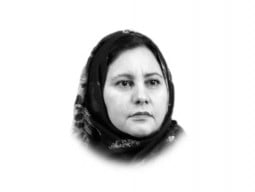
In August 1861, the explorer Godwin-Austen was camped on the Panmah Glacier when he met four travellers coming down the icy slopes of the glacier above. They were Balti men returning home from Yarkand to meet friends and relatives. Godwin-Austen noted that they were very well-clothed and equipped and guessed that living in Yarkand had done them well in economic terms.
Though the explorer already knew of the depredations of the men of Hunza, he got first-hand information on the subject from his Balti visitors: the robbers from whom no one was safe were all over the place. The road across the glaciated Great Asiatic Divide to Raskam and beyond was within their reach. As well as that, they also prowled along the great trunk road from Leh that we today sometimes know as the Karakoram Route over the pass of the same name.
The Hunza men robbed and killed ruthlessly. Anyone spared was captured to be sold into slavery in Bokhara. The robbers were the bane of travellers on those lonely trails. The four Baltis had been fortunate because they had taken all precautions. They travelled by night and hid away among the rocks during the hours of daylight. They did not light a fire for fear of giving away their position and ate only pre-cooked food they carried.
By the 1870s, the caravans plying on the Karakoram Route were carrying British goods. This was also fair game for the men of Hunza. Rankled by this carrying on, the rulers of India Britannica sought a way of bringing this brigandage to an end. Now, the route over the Karakoram Pass lay no less than 250 kilometres east of Hunza. In between stretched a most terrifying wilderness of bleak river valleys, high peaks and glaciers. So, which way did the Hunza men travel between their mountain country and the trade routes?
British explorers pretending to be traders were sent out across the Great Asiatic Divide to find out. But it was only in 1889 that a young lieutenant named Francis Younghusband discovered the Shimshal Pass and told his masters in Delhi of the route used by the Hunza men. Shimshal, stretching in a west-east direction east of Hunza, is a tight and narrow vice-like gorge; the route through it being no picnic stroll. Here are scree slopes to negotiate, scree slopes so terrifying that simply looking down to the river far below makes one breathless. Here are paths that only ibex can use.
Having crossed the Shimshal Pass at the top of the valley, they descended to the Braldu River. They now had three choices. Across the river, they could negotiate the Wesm Pass to enter the Skamri Glacier and reach the road coming down the Muztagh Pass by the Sarpo Laggo Glacier. Or they could go upstream along the Shaksgam, cross the pass of the same name and reach the trunk road coming down the Karakoram Pass. They could also go to the junction of the Braldu and Yarkand rivers, follow the latter to its junction with the Raskam and then go upstream to Raskam village.
We know from 18th century travellers chronicles that the Hunza men terrorised on all these roads. One only has to travel in the Shaksgam River to understand the topography and physical conditions of this region. Then one can only admire the courage and mountaineering skills of the Hunza men: this is a high altitude utterly uninhabited region of raging rivers that make travel in high summer nearly impossible. The slopes are treacherous shingle or sheer rock. Because the river occupies the floodplain in summer, the window for travel is short: between May and June and then again from September to November when the river is low and the frosts have not yet set in.
The men of Hunza who set out from their idyllic valley to traverse this terrifying desolation in order to lie in wait for passing travellers were a breed apart. Today, the descendents of these same doughty mountaineers are among the most cultured and sophisticated people in Pakistan. Their salvation: the education programme of the Aga Khan Foundation.
Published in The Express Tribune, October 29th, 2011.
COMMENTS (10)
Comments are moderated and generally will be posted if they are on-topic and not abusive.
For more information, please see our Comments FAQ


















































Why not the movie is released yet which is reflecting the story of younghusband? TOURNMENT OF THE SHADOWS
Hunza then was so, as you say. We can see the Hunza of today ourselves. 1000% developed if what you said is 10% true.
Hunza by the Grace of Allah is progressing rapidly. We are proud of it.The new generation of Hunza will stand out and bring fame and good name to their homeland.
"They travelled by night and hid away among the rocks during the hours of daylight. They did not light a fire for fear of giving away their position". Surprising! how someone can travel in the glacial mountains by night without fire????
The rest of the story is a reality. The people of Hunza now the most cultured community of the country.
Historical film on Hunza Kingdom: http://www.youtube.com/watch?v=3KUMuIt85y0
Super! Beautifully descriptive! I second the opinions of Simon and Cynical, photo essays would be a great treat. I agree education makes real difference in human development.
@Simon Very good suggestion. Hope the author can do something about it.
Typo - Sixth paragraph, second to last line- latter* Bad subbie
Typo - Sixth paragraph, second to last line- latter*
One suggestion,it would be nice if these articles could be more of photo essay along with maps so as to enrich the reader. Keep writing.